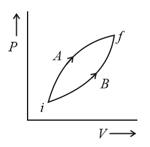EASY
Earn 100
For a cyclic process, which of the following is not true?
(a)
(b)
(c)
(d)Total W = 0
50% studentsanswered this correctly
Important Questions on Thermodynamics
MEDIUM
(R = 8.314 J/mol K) (ln7.5 = 2.01)
HARD
The specific heat of a certain substance is . Assuming ideal solution behavior, the energy required (in ) to heat of molal of its aqueous solution from to is closest to :
[Given: molar mass of the substance ; specific heat of water ]
EASY
MEDIUM
MEDIUM
EASY
MEDIUM
MEDIUM
EASY
EASY

MEDIUM
EASY
MEDIUM
EASY
HARD
EASY
EASY
EASY
EASY

